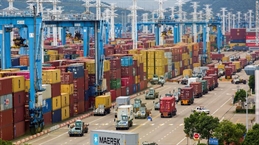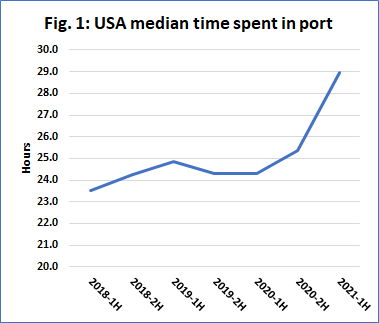
Sea Intelligence said the median time spent by container vessels in port began to grow sharply in the second half of 2020, continuing into the first half of 2021.
The maritime analyst said it used data published by the United Nations Conference on Trade and Development (UNCTAD) on port stays to see if it could shed light on the current bottleneck issues faced by the container shipping industry.
"A quick calculation showed that the median time spent in port in 1st half of 2021 was higher by 11% compared to the pre-pandemic average time spent in port in 2018-2019," Sea-Intelligence said.
"Comparing this to the global demand data published by Container Trade Statistics (CTS) – which was up 5.5% over the same period – shows that the efficiency of the port calls themselves declined in 2021," it added.
The analyst noted that compared to the other vessel types, the median time spent in port for container vessels recorded a "far greater increase."
"Hence, to some degree, the container shipping sector is more impacted by the supply chain bottlenecks than other parts of shipping – which in all likelihood can be traced to the container shipping sector having a strong reliance on a land-side intermodal setup, which also suffers from severe bottlenecks presently," it added.

Sea-Intelligence noted that the illustration showed the development in median port stay in the USA.
"Here we can see a 20% increase in the median time spent in port. We looked at the data for European ports and saw a very large increase in median port stays for both Germany and France, whereas Netherland, United Kingdom and Belgium see a change more in line with the global average," the analyst said, noting that "Spain has even seen a marginal decline in median port stay time."
"Looking across origin regions, China recorded a 12% increase in the first half of 2021 vs. 2018-2019, which is basically in line with the global average increase in 1st half 2021. Further breaking it down across transhipment hubs, we saw a 20% increase for Singapore and a modest 6% increase for Singapore," it added.




